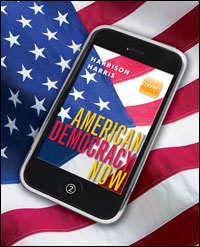1 A) excessive national debt B) overreliance on imported oil C) its failure to capitalize on "green" technologies D) problems within its financial institutions 2 A) upward mobility B) a financially secure life C) prosperity attained through individual hard work D) All these answers are correct. 3 A) poverty B) political violence C) natural disaster D) search for greater economic opportunity 4 A) a pure capitalist economy B) a regulated capitalist economy C) a hybrid capitalist economy D) a controlled capitalist economy 5 Wealth of Nations (1776), economist Adam Smith did which of the following?A) argued for unregulated competition in the marketplace B) argued for regulated competition in the marketplace C) argued for a marketplace managed by the state D) argued against a market-based economy 6 A) was strengthened. B) did not change. C) was weakened. D) was revised. 7 A) state legislatures. B) Congress. C) the federal judiciary. D) the president. 8 A) increasing spending and reducing taxes to stimulate the economy under certain conditions B) raising taxes and decreasing spending to lower inflation C) raising taxes and increasing spending, because increased taxes would pay for increased spending D) government implementation of laissez-faire policies 9 A) the combination of increasing money supply and raising interest rates to curb inflation B) decreasing interest rates to curb excessive supply C) a combination of tax and spending policy D) raising interest rates and the cost of money to stimulate growth 10 A) decrease taxes and government regulation B) increase taxes and government regulation C) decrease taxes and increase government regulation D) increase taxes and decrease government regulation 11 A) gross national product B) gross domestic product C) consumer price index D) import-export balance 12 A) the relative physical health of peoples around the world B) the relative standard of living of peoples around the world C) the relative educational levels of peoples around the world D) the relative health of economies around the world 13 A) benefiting from the economy. B) contributing to the economy. C) increasing or decreasing their consumer spending. D) paying at an equitable tax rate. 14 A) just under $14,000. B) just under $22,000. C) just under $28,000. D) just under $34,000. 15 A) 5 B) 15 C) 25 D) 35 16 A) It does not have a major impact on consumer spending. B) It has a powerful impact on the economy because it affects the level of consumer spending. C) It has only a minimal effect on the economy because it is the same for all taxpayers. D) It has a powerful impact on the economy because it directly affects interest rates. 17 A) a regressive tax B) a flat tax C) a progressive tax D) a proportional tax 18 A) protecting the American consumer from substandard foreign goods B) protecting the American consumer from expensive foreign goods C) protecting domestic producers and businesses from foreign competition through tariffs and non-tariff trade barriers D) forcing foreign nations to pay their workers a living wage 19 A) tax policies. B) policies on trade protectionism and the balance of payments. C) consumer debt. D) its availability. 20 A) spending less than it is taking in. B) spending more than it is taking in. C) balancing expenses and income, and decreasing the deficit. D) None of these answers is correct. 21 A) remaining fairly constant. B) getting larger. C) decreasing because of our current, low birth rate. D) decreasing because of the improved health of seniors. 22 A) setting monetary policy. B) regulating banking institutions. C) setting tax rates. D) maintaining the stability of financial markets. 23 A) Federal Trade Commission. B) Interstate Commerce Commission. C) Securities and Exchange Commission. D) National Labor Relations Board. 24 A) the global environment. B) American standards of living. C) American trade deficits. D) All these answers are correct. 25 A) a subsidy B) a stimulus package C) social regulation D) business regulation





